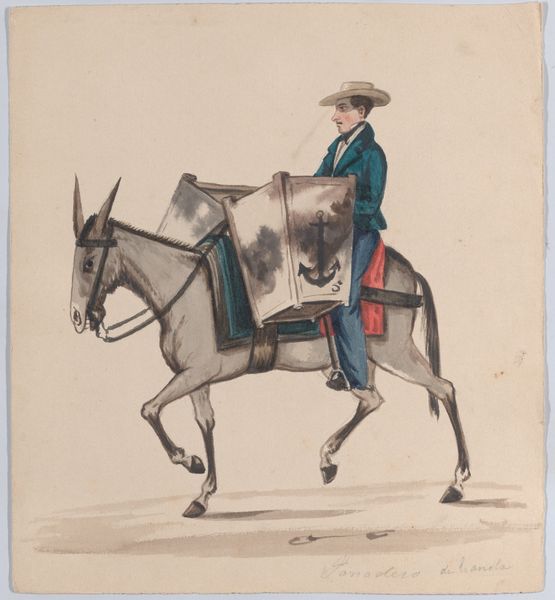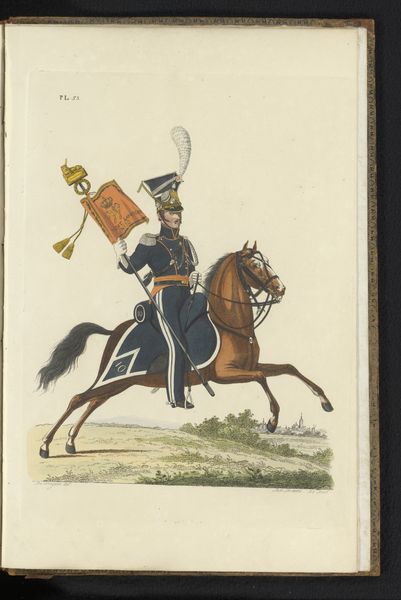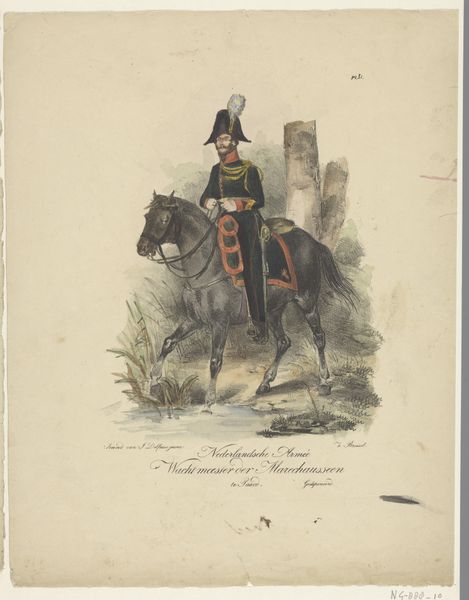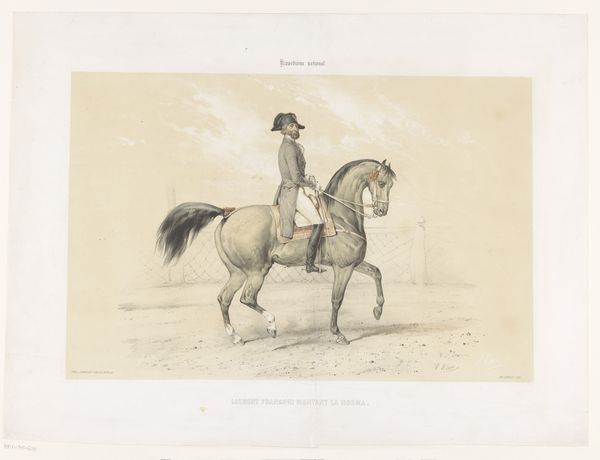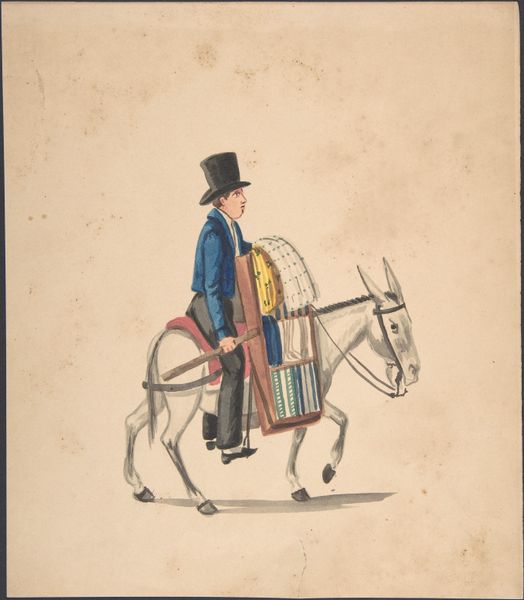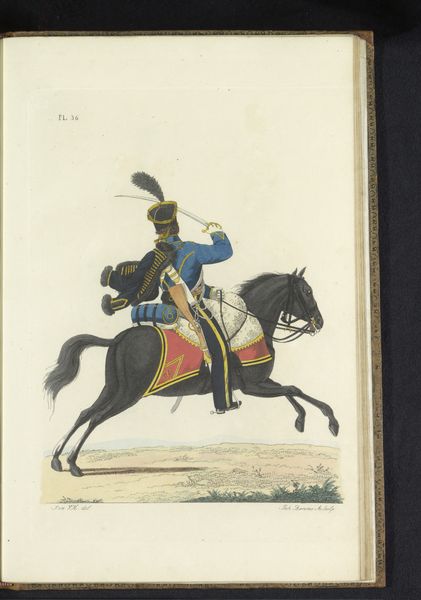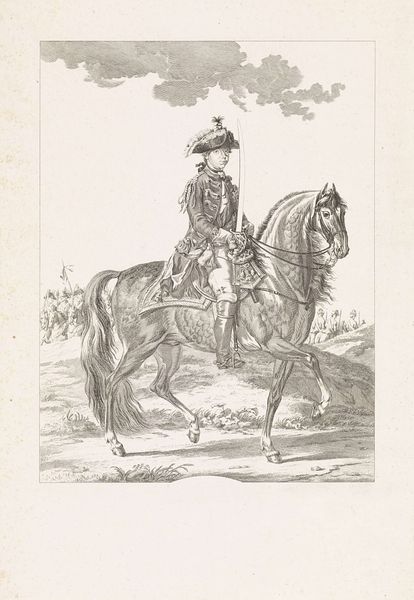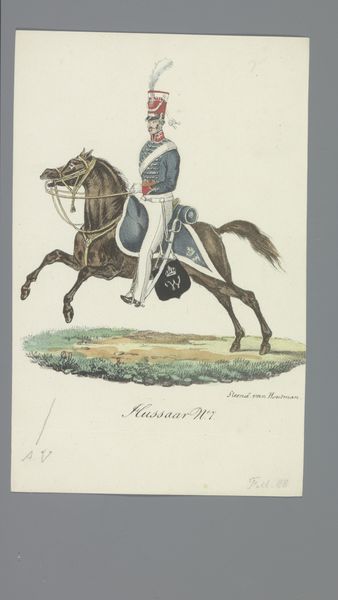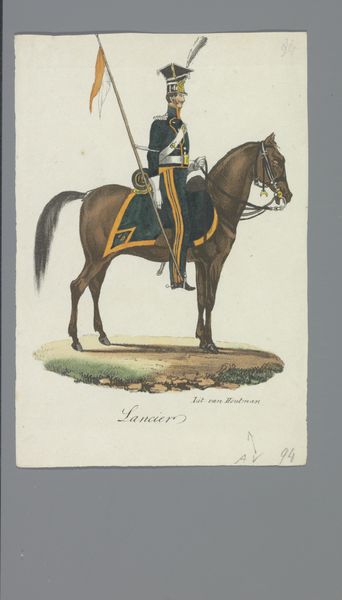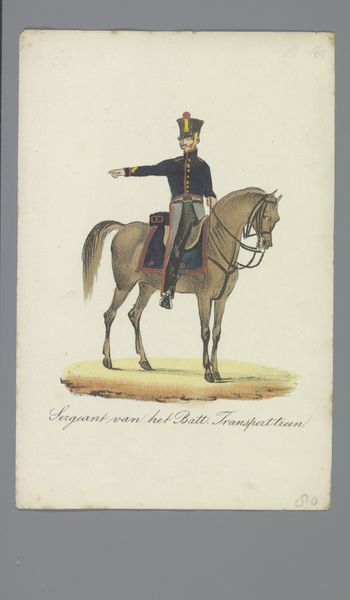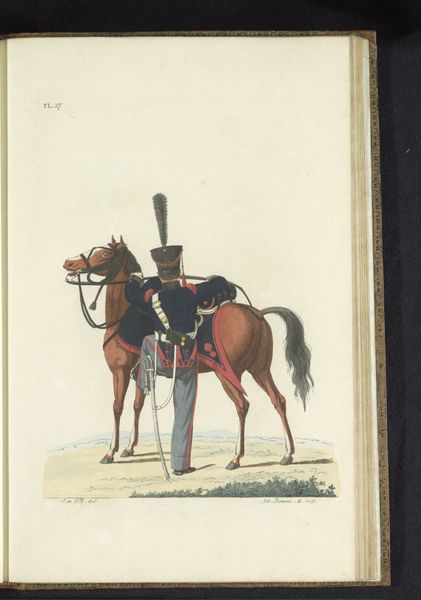
An elegantly dressed man on horseback, from a group of drawings depicting Peruvian dress 1843 - 1853
0:00
0:00
drawing, coloured-pencil, print, watercolor
#
portrait
#
drawing
#
coloured-pencil
# print
#
caricature
#
landscape
#
caricature
#
figuration
#
watercolor
#
coloured pencil
#
romanticism
#
watercolour illustration
#
genre-painting
#
academic-art
#
surrealist
Dimensions: Sheet: 9 1/16 × 8 1/16 in. (23 × 20.5 cm)
Copyright: Public Domain
Curator: Let's discuss this work, "An Elegantly Dressed Man on Horseback, from a Group of Drawings Depicting Peruvian Dress," attributed to Francisco Fierro and created sometime between 1843 and 1853. Editor: Immediately, the vibrant blues and whites against the tan horse suggest a kind of idealized portrayal. The elegance is pronounced. Curator: Indeed. Consider Fierro's method: colored pencil and watercolor on paper, likely mass-produced. His approach democratized portraiture in Lima at this time, moving away from exclusive oil paintings for the elite. These images were readily available as prints, making them accessible to a wider audience. Editor: The figure’s attire is fascinating; the hat, the poncho... all communicate identity. Are we seeing a specific symbol of Peruvian identity emerging here? The horse itself, what did it represent at the time? Curator: Possibly a "dandy." Someone appropriating traditional wear but slightly out of place, representing social stratification and aspiration. Fierro was known for capturing archetypes, and social realities of Peru. The materiality speaks to a certain resourcefulness of the artist. Look at the paper—it suggests not wealth or high production values but widespread commerce, even an emerging national identity pieced together. Editor: The rearing horse itself might symbolize power, nobility perhaps but consider that this pose is often seen in equestrian portraits of royalty and military leaders. Even the way the figure holds the reins projects authority. What tensions between the old symbolic regime and the materials he is working with does that imply? Curator: Exactly, that tension. He uses available materials to convey complex societal shifts, creating a visual archive of changing social mores and economic realities of mid-19th-century Peru. The art wasn't about inherent value but circulation, representation, documentation. Editor: So much hinges on unpacking these loaded signifiers and observing their transformation in this new republic. I had taken his "elegance" simply but Fierro's composition truly offers insight. Curator: Yes. A testament to how close analysis of materials reveals a great deal about artistic and cultural intentions. Editor: Definitely food for thought. Thanks to that new view into the symbolic load he transports!
Comments
No comments
Be the first to comment and join the conversation on the ultimate creative platform.
